REPTILES AND AMPHIBIANS N-Z
North Carolina is home to many species of herps, in fact more than most states in the southeastern United States. Most likely, at some point in your life you will come into contact with a herp. But remember to never touch, pick up, or provoke any animal you cannot identify!
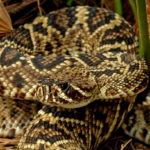 |
The eastern diamondback rattlesnake is North Carolina endangered, but may have been extirpated because none have been seen in the state since the early 1990’s. The eastern diamondback Rattlesnake receives no federal protection despite the fact that it has declined over much of its range. |
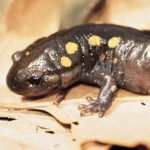 |
Eventhough they are a very common salamander in North Carolina, most people have never seen a spotted salamander because they spend 95 percent of their lives on the forest floor under leaf litter, in hollow logs, or small holes in the ground. |
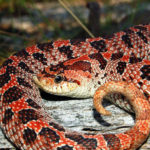 |
The southern hognose snake is North Carolina threatened. These snakes are found in sandy fields and woods of the Coastal Plain and Sandhills region of the state. It is a secretive snake that spends much of its time under surface litter of underground. |
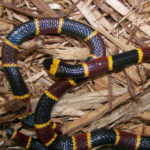 |
Eastern coral snakes are very rare in North Carolina and are considered North Carolina endangered. They live in sandy areas and stay underground most of the time. It is a venomous snake that can be distinguished from nonvenomous mimics because coral snakes have yellow bands adjacent to their red bands and a black snout instead of a red snout. An old poem is a helpful reminder: “Red and black, friend of Jack; red and yellow, kill a fellow.” |
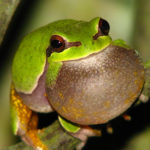 |
The pine barrens treefrog is the state frog of North Carolina. These frogs have a limited distribution in North Carolina, and are listed as significantly rare by the NC Natural Heritage Program. They are found only in the sandhills of North Carolina and are nocturnal and seldom seen. |
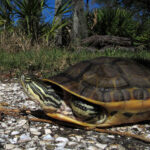 |
Chicken turtles are found in the Coastal Plain of the southeastern U.S. but are absent from the Piedmont and Mountains. In North Carolina they live in the Sandhills region in forested wetlands associated with longleaf pine forests. It is a North Carolina species of special concern. |
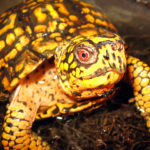 |
Eastern Box Turtles live in a variety of habitats throughout North Carolina. Although they can live in a variety of habitats, they prefer moist forested areas with large amounts of underbrush. They do not travel far, usually living within an area less than 200 meters in diameter. |
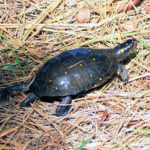 |
The spotted turtle is not an officially protected species, but the U.S. Fish and Wildlife Service considers the spotted turtle an at-risk species – one that will be evaluated for listing under the Endangered Species Act. It is also on the North Carolina animal watch list as a species whose population is known to be declining. They live in the eastern half of the state in a variety of wetland types, including swamps, bogs, marshes, small streams, wet meadows, and wet forests. |








